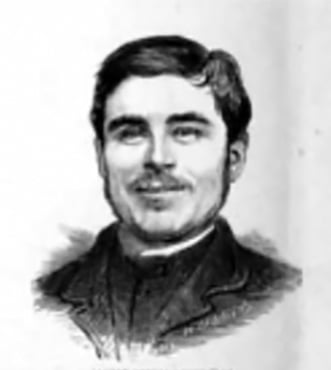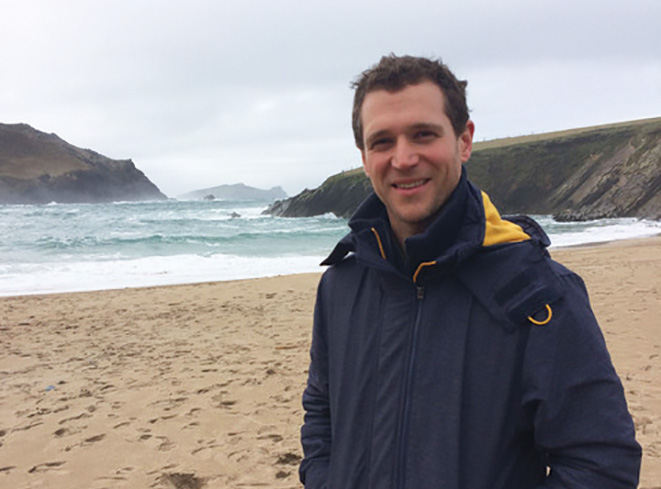John Cadogan Murphy, later known simply as ‘Whitehead Murphy’, was born in 1859 in Assolas near Skibbereen, where the monument now stands on the Baltimore Road. John had three brothers – Patrick, James and Jeremiah – and three sisters – Harriet, Nora and Mary Ellen.

Before his 21st birthday John sailed across the broad Atlantic and settled in Lawrence, Massachusetts, where his uncle Timothy secured a job for him as a painter in Pacific Mills.
In the United States, John associated with fellow Irishmen who yearned for the freedom of their homeland. He joined the Fenian movement, a decision that did not require much encouragement as John came from a part of Ireland where the famine known as ‘An Gorta Mór’ had decimated the population, aided by an abominable response from the ruling British authorities. In essence, John was ‘raising revenge for Skibbereen’ when he joined the militant Irish nationalist movement, of which he became a vital cog in the machine.
Having learned how to manufacture explosives, John joined a bombing team that was sent to England in 1883. He rented a property at 128 Ledsam Street in Birmingham, set up a paint store there and adopted a false identity – Albert Whitehead, a Protestant gentleman who attended weekly service at the local church and read to his landlady from a prayer book every night!
The paint store served as a decent cover for the bomb factory in a back room, the paint and oils masking the smell of chemicals. Whilst John worked solo in Birmingham making the bombs, the rest of the Fenian team was based in London, where they planned to attack Westminster in the spring of 1883. After the explosives were delivered to the British capital, John would slip back to America.
Over a period of time some explosives were indeed transported from Birmingham to London via horse and cart, the delicate cargo stuffed in rubber holds and boxes. However, the ‘paint store’ in Birmingham was under police surveillance – John’s suppliers had been alarmed by the excessive amount of pure glycerine being ordered by a small business-owner with an Irish accent.
On one occasion Tom Clarke, a member of the London team, paid a visit to collect ‘paint’ and noticed a policeman lurking nearby. Tom (who would meet a martyr’s end in 1916) alerted John, who simply replied, “we’ve come this far and we won’t stop now!”
But stop they had to when police swooped in on John in Birmingham and Tom Clarke and others in London. A dawn raid on John’s lodgings resulted in the police lifting him from his bed and taking him away in handcuffs.
In May 1883 John Cadogan Murphy was tried in the Old Bailey with Thomas Gallagher, Tom Clarke, William Ansburgh, Bernard Gallagher and John Curtin. 23-year-old John spent the next 13 years in British prisons – Millbank, Chatham and Portland –, where he was broken both physically and mentally. Tom Clarke mentioned John in his book ‘Glimpses of an Irish Felon’s Prison Life’, where he describes how the mental state of the Skibbereen man declined; Tom witnessed him eating ground glass in Chatham prison.
Fenian prisoners were marked out for special treatment – subjected to beatings, solitary confinement, sleep deprivation and forbidden to speak to each other. Tom Clarke recounted how many of his fellow Fenian prisoners slowly lost their minds: “One by one I saw my fellow prisoners break down and go mad under terrible strain, some slowly and by degrees, others suddenly and without warning. ‘Who is next?’ was the terrible question that haunted us day and night, and the ever recurring thought that it might be me added to the agony.”
Early into his imprisonment, warders dished out an unmerciful beating to John when they suspected him of passing notes to fellow Fenian prisoners. They claimed John had a piece of paper in his mouth and a warder almost choked John when he forced a hand down his throat.
Word had spread on the outside of this brutal prison regime and further awareness was raised when Maud Gonne petitioned to see John but was refused. The authorities did not believe John’s mental health had declined; they claimed he was faking insanity and continued with their inhumane treatment.
John Cadogan Murphy was released into the care of his younger brother James in 1896 and travelled home to Skibbereen. The roads were lined with bonfires and cheering crowds but John was not mentally well and, on the night he arrived home to his mother’s cottage, he ran away. Having walked all the way to Cork City, John was later found wandering up and down Andersons Quay seeking passage to America.
In September 1896 James took John to New Jersey, on-board the Cunard steamer Lacania from Queenstown (Cobh). Upon arrival in the US, members of the Fenian movement warmly welcomed John, lining the quayside to greet him. A celebration had been organised at Madison Square Garden but John refused to go as his paranoid state of mind made him suspect his Fenian comrades of being British agents.
In the US, John and James stayed with their sister Harriet. James, who would later become a Chief Carpenter in the US Navy, continued the heart-breaking task of looking after his mentally broken brother.
This tale of John Cadogan ‘Whitehead’ Murphy ends on a sad note. He never recovered his mental health, irreparably damaged by his 13-year stint in British prisons. Extreme bouts of paranoia led to episodes of running away, which caused great distress to his loved ones. A report in The Southern Star of that time, headlined ‘Whitehead’s Condition’, described the heartache of John’s siblings as they tried to care for their brother. The report details how John had run away and was found on a bridge which spanned New York’s Harlem River: “His brother, fearing he might jump into the water, threw his arms around him and drew him back. When the former prisoner recognised who it was that held him he flew into a frenzy.”
John was finally committed to Bellevue Hospital before being sent to Amityville Asylum, from where he managed to escape in January 1897 and was never seen or heard from again.
Pauline would like to thank Caoimhghin O’Murchadha for bringing the story of his ancestor to her attention.



